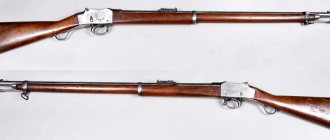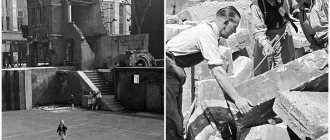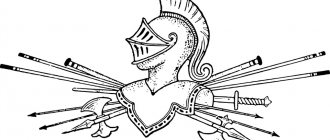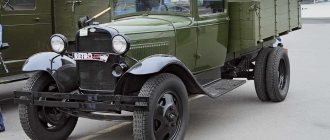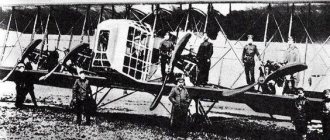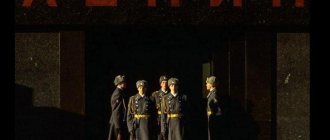When it comes to medieval castles, the first association is usually a huge, majestic structure with high walls, a moat around the perimeter, knights guarding it, and, of course, noble ladies and gentlemen in high towers. But in real life, both the castle itself and living in it turned out to be not so carefree and fabulous, and most beliefs in fact are just a beautiful illusion about bygone times. We bring to your attention facts about castles of the Middle Ages, which destroy myths that have existed for decades.
The term "castle" is applied to fewer structures than is commonly applied
Not everything is a castle, but a beautiful large-scale structure. /Photo: pinterest.de
Today it is quite easy to trace a widespread trend: the word “castle” is now preferred to be applied to, in fact, any impressive residential structure of the Middle Ages, where a feudal lord at least supposedly lived. That is, now a castle is called not only full-fledged fortresses, but also palaces, and even any large estate.
The 19th century castle is a striking example of neo-Gothic, or stylization of the Middle Ages. /Photo: klook.com
In reality, the term “castle” should exclusively refer to a structure that fits the characteristics of a “fortification.”
And inside there is usually a whole series of buildings for various purposes, which, in fact, make up the infrastructure of a settlement hidden behind the walls. However, the main function of the castle has always remained defensive. Therefore, for example, it would not be correct to call the legendary romantic palace of Ludwig II - Neuschwanstein - a castle.
5) Prepare the landscape
0
An 18th-century engraving of the 1597 plan of the Tower of London shows how much earth had to be moved to build the moats and ramparts.
When building a castle, you may have to move a significant amount of earth, which is not cheap. It is often forgotten that the castle’s fortifications were built not only through architectural techniques, but also through landscape design. Huge resources were devoted to moving land. The scale of the Norman land work can be considered outstanding. For example, according to some estimates, the embankment built around Pleshy Castle in Essex in 1100 required 24,000 man-days. Some aspects of landscaping required serious skill, especially the creation of water ditches. When Edward I rebuilt the Tower of London in the 1270s, he hired a foreign specialist, Walter of Flanders, to create a huge tidal ditch. Digging the ditches under his direction cost £4,000, a staggering sum, almost a quarter of the cost of the entire project. With the increasing role of cannons in siege art, the earth began to play an even more important role as an absorber of cannon shots. Interestingly, experience in moving large volumes of earth allowed some fortification engineers to find work as garden designers. Tip: Reduce time and cost by excavating the stonework for your castle walls from the moats around it.
The gate, as the most vulnerable part of the castle, was designed in a special way
Castle gates are too invulnerable not to pay attention to their design. /Photo: uklive.ru
In examples of modern cinema, the plot of which takes place in medieval times, you can often see castles with wide gates that close on large folding doors made of strong wood with a powerful bolt.
But in real castles of the second millennium AD, the central entrance, which is the gate to the fortress, was designed based on special calculations.
Such a gate in a medieval castle would have caused a lot of problems. /Photo: pinterest.de
The fact is that the gate was indeed the most unprotected place in the castle’s defense system - after all, it is much easier to break it and break through than to try to destroy the wall or climb over it.
That is why the central entrance was designed taking into account two conditions: it must be such that a cart or cart could easily enter it, but at the same time hordes of soldiers from the enemy army could not squeeze through.
In addition, medieval castles did not have large wooden gates, which are often shown in historical films and TV series, because they were simply impractical in defensive conditions.
Horrors of the castle moat
0
Source:
Moats surround the outside of many castles. They prevent anyone from approaching the front gate: crossing usually required a drawbridge. This was a good defense against enemies, especially since the bridge did not allow the besiegers to build tunnels under the wall - after all, no one would want to drown in a tunnel full of mud. Moreover, no one wanted to wade across the ditch - after all, it was into it that human waste was poured from the castle. The ditch was not only dirty, but also gave off a rancid smell.
The interior walls of the castle were painted in bright colors
Everything was not as dull and gray as it has come to this day. /Photo: wikipedia.org
Most of us are sure that medieval castles, like the era itself, which Renaissance thinkers call the “dark times,” were just as gloomy and gray, or at most, brown.
However, in reality everything was much rosier, and in the literal sense of the word. The fact is that medieval people loved bright colors, and therefore often decorated the interior of their homes, and the walls of castles were no exception in this sense. But most of us do not know about this precisely because the paints simply have not survived to our time.
The bright interiors of medieval castles have been preserved in some places, but more often only gray walls remain. /Photo: livejournal.com, holiday.by, blair-castle.co.uk
Interesting fact: a similar trend persisted in relation to ancient sculptures. It seems amazing, and even strange, but the famous Greek and Roman images of gods or people in marble were painted in the brightest shades: this has long been proven by historians and archaeologists, who were even able to partially recreate the original appearance of works of art using computer graphics.
But all this riot of colors has not reached us either, and therefore in our imagination, as in the movies, ancient sculptures are presented exclusively in white.
Content
- 1 Types of fortification 1.1 Archer towers
- 1.2 City walls
- 1.3 Harbors
- 1.4 Churches and monasteries
- 1.5 Mott and bailey
- 2.1 Location
Large windows were practically absent in medieval castles
It was not for nothing that there were not enough windows in castles in the Middle Ages. /Photo: topdom.info
From the same movies or TV series, many of us remember scenes where the huge halls of medieval castles are illuminated by daylight through impressive, almost panoramic, windows. Or some nobleman is woken up by opening heavy curtains over large frames. But in real life, such cute scenes often simply could not happen.
In the French fortress of Carcassonne, the windows have only one name. /Photo: pinterest.com
The thing is that the medieval castle did not have windows as such at all - they were most often replaced by numerous small window “slots” that were made in the castle walls. Such narrow window openings not only had a defensive function, but were also designed to protect the privacy of the castle residents.
The large windows of the castle indicate a later period of its construction. /Photo: nikatravel.ru
This is interesting: in fairness, it is worth clarifying that in some palaces you can still find luxurious panoramic windows, but with a high degree of probability, they were built in a later era, such as the Roctailade castle in the south of France.
2) Come up with a workable plan
You will need a master mason who can draw plans. An engineer knowledgeable in weapons will also come in handy. Experienced soldiers may have their own ideas about the design of the castle, in terms of the shape of its buildings and their location. But it is unlikely that they will have the knowledge of specialists in design and construction. To implement the idea, a master mason was required - an experienced builder, whose distinguishing feature was the ability to draw a plan. With an understanding of practical geometry, he used simple tools such as the ruler, square, and compass to create architectural plans. Master masons submitted a drawing with a building plan for approval, and during construction they supervised its construction. When Edward II began building a huge residential tower at Knaresborough Castle in Yorkshire in 1307 for his favorite Piers Gaveston, he not only personally approved the plans created by the London master mason Hugh of Titchmarsh - probably made as a drawing - but also demanded regular reports on the construction . From the mid-16th century, a new group of professionals called engineers increasingly began to take on a role in drawing up plans and constructing fortifications. They had technical knowledge of the use and power of cannons, both for defense and attack on castles. Tip: Plan the loopholes to provide a wide angle of attack. Shape them according to the weapon you're using: longbow archers need larger slopes, crossbowmen need smaller ones.
Medieval castles are full of secret passages and dungeons
There were no medieval castles without secret passages and basements. /Photo: quora.net, exploring-castles.com
Perhaps this is one of those common opinions about medieval castles that is true. After all, many of us have read or seen in films and TV series how characters, fleeing from pursuit or simply wanting to remain unnoticed, prefer to move along secret corridors or descend into dungeons hidden from the eyes of ordinary people.
The dungeons of the Swiss castle have long been overgrown with dark legends. /Photo: tripadvisor
There was indeed a tendency to design hidden passages in castles of the Middle Ages, and quite widespread.
The main reason for their appearance was, of course, the desire to have, just in case, the opportunity to sneak away from the enemy unnoticed through secret corridors. In addition, the so-called poterns were actively created - that is, underground passages that led to different parts or buildings of the fortress, as well as beyond its borders.
Alas, secret passages can become the Achilles heel of the castle. /Photo: messynessychic.com
However, these same secret corridors and dungeons with many castles played a cruel joke: if during hostilities or a state of siege there is a traitor inside the structure who knows about the existence of hidden labyrinths, then it will not be difficult for him to open this path to the enemy army. This is exactly what happened in 1645 during the siege of Corfe Castle.
The Art of Siege
The art of siege , well known to the ancient Romans, was lost Europe Busy with constant wars with external enemies and their rebellious vassals, European sovereigns then had neither the funds nor the time to build fortresses. The forgotten art of siege began to be revived with the advent of castles . Its development was spurred by the Crusades, which introduced Europeans to Arab and Byzantine . The siege and defense of castles was led by knights .
War vehicles
The defensive devices of castles and fortresses were a response to the creation of siege engines , whose task was to overcome walls and fight enemy personnel. Some siege engines delivered the besiegers through the walls in the safest way, while others broke the walls, creating a gap for passage.
Through the walls
A breach in the wall provided quick and massive passage into the fortress. The wall was destroyed not only by projectiles from throwing machines, but also by an ordinary ram - a log with a strong tip, which was used to hit the wall and break it. The improved ram was a gable shelter, under the protection of which several people swung a log suspended on chains. The ram's work was made easier by a trepan - a large hand drill that weakened the masonry of the walls.
Ram
Trebuchet and ballistas
The besiegers destroyed the walls with shells fired from throwing machines . Those besieged from the walls threw shells and barrels of flammable mixtures at enemy vehicles. Throwing machines were divided into two main types - trebuchets and ballistas (catapults). The trebuchet acted like a lever, with a weight at one end and a sling with a projectile at the other. Using rope blocks, the sling was pulled down, lifting the load. When the ropes were released, the load quickly fell, and the sling flew up, and a projectile flew out of it with acceleration.
Ballista
Trebuchet
The action of the ballista is reminiscent of the action of a slingshot, where instead of an elastic band, the projectile is pulled back with a bowstring using two lever arms. Each shoulder is inserted into a tourniquet at one end, and connected to the bowstring at the other. The string is pulled back and the levers twist the strands. When the bowstring is released, the strands rapidly unwind and “straighten their shoulders.” The string stretches and pushes out the projectile, which accelerates along the chute.
Undermining
An effective way to destroy walls is undermining . Sappers were engaged in constructing the tunnel , and ordinary peasants were engaged in excavation work. All work was carried out underground, hidden from the castle defenders. The tunnels began to be dug away from the walls, at a safe distance. A vertical tunnel was dug to a depth below the bottom of the castle moat , and a horizontal trench to the tower. Having reached the foundation, they dismantled its masonry, removing stone by stone and strengthening the resulting gap with wooden supports. The hole was filled with brushwood and set on fire. The supports burned out, and the tower, deprived of support, collapsed, opening the entrance to the attackers. With the advent of gunpowder in the 14th century. Mines were used to undermine the wall.
Over the walls
The easiest way to overcome a wall is to climb over it using siege ladders . But as they climbed them, the attackers became targets for arrows. For the safe and massive delivery of warriors to the walls, a siege tower was used - Shasshasto . This wooden tower was protected from the front and sides by walls and hung with raw skins in which arrows stuck. The tower was moved to the wall on rollers, the warriors hiding in it climbed the internal stairs to its upper platform, the front wall of the platform leaned back onto the castle wall, creating a bridge for exit. The warriors were also delivered to the wall by a “ stork ”, which acted on the principle of a well crane, raising a “barrel” with a group of warriors to the height of the wall.
Shas-shasto
Countermeasures
The besieged discovered the location of the tunnel using bowls of water placed along the perimeter of the walls: ripples in the water indicated the shaking of the wall being destroyed by sappers. Having determined where the tunnel was being made, the besieged began to dig a tunnel towards them and, at the intersection of the underground galleries, arranged a “warm welcome” for the enemy. Sometimes, having calculated the depth of the enemy’s tunnel, they dug an oncoming tunnel above it, connected the tunnels with a hole, let water in from a ditch or from a river and drowned the enemy’s sappers.
Castle Siege
The gap in the wall was quickly closed with a pre-prepared breach - a wide wooden tower, pulled up to the gap on rollers and inserted into the gap. The besieged soldiers captured the storming warriors from the walls with a special device - a wall "raven" - a lever, at one end of which there was a load, and at the other - a hook or loop.
The assault on a medieval castle could take years
Not everything is as colorful in the siege of a medieval fortress as is usually shown. /Photo: tes.com
In most episodes of various films and TV series, the process of taking a castle by storm takes place in just a couple of hours. Of course, the main reason for such transience is the limited timing, but many people think that the assault actually happened quickly. However, in reality, everything was not so simple, and most importantly, not so fast.
A fragment of a medieval miniature about the siege of Antioch from "Fragments d'Outremer" by Sebastian Mamero. /Photo: about-history.com
Historical sources impartially claim that the siege of a castle in the Middle Ages was one of the main forms of military operations, therefore each of them was developed especially carefully.
In particular, precise calculations were made on the relationship between the trebuchet, that is, the throwing machine, and the thickness of the walls of the fortress that was going to be taken. After all, in order to break through the defensive fortifications of the castle, a trebuchet needed at least several days, and most often - several weeks.
Image of a trebuchet in a medieval engraving. /Photo: askdifference.com
Therefore, the siege itself often lasted for months, or even years. For example, the siege of Harlech Castle by the future king Henry V lasted almost a year, and the aforementioned capture of Corfe Castle lasted for three.
Moreover, in the first case, the reason for the fall of the besieged fortress was the end of food supplies, and in the second - betrayal. But such a mechanism for taking a castle as a massive attack was practically not used, because it was simply impractical, therefore it was used only in extreme cases.
Firearms
Gunpowder, which gave birth to firearms, was invented in China back in the 6th century. The Chinese used it for fireworks and throwing bombs, and from the mid-13th century. - for firing cannons. Mongol conquerors in the 13th century. They brought gunpowder to the Middle East, from where it came to Spain with the Arabs, and at the beginning of the 14th century. explosive powder appeared in Western Europe. Developed European metallurgy made it possible to cast high-quality barrels for artillery pieces, and in 1340–1370. firearms spread throughout all countries, including Russia.
The first bombards
The first artillery pieces were bombards . They shot inaccurately and not far. The damage from their shots was small, but the roar was so loud that, according to eyewitnesses, the horses fell dead. The use of new weapons at first was rather a means of intimidating the enemy. This is probably how bombards were used in 1308 by the Spanish king Ferdinand IV of Castile during the siege of an Arab fortress in southern Spain (on Gibraltar ) and the English king Edward III against the Scots in 1327. Bombards were more often used during sieges. To break through walls, the weapon must fire large cannonballs, i.e., have a large caliber (barrel diameter). Large bombards were made from long strips of iron welded together and fastened with hoops. Later they learned to cast bronze tools. Metal ingots were often delivered to the battle site, and bombards were cast on site. And yet the early bombards hit no harder than the throwing machines. It took a long time to load a bombard, and they rarely fired more than once in battle. The high cost of artillery, its bulkiness, and the cost of hiring experienced artillerymen did not allow abandoning throwing vehicles.
Bombard of the Order of Malta with Fr. Rhodes. 1480–1500 One of the largest surviving bombards, weighing 3 tons 325 kg. Granite core weighing 260 kg.
Small bombard on a carriage. End of the 15th century
Small naval bombard. France. XV century Bombards were used not only on land, they were also installed on ships to fire at enemy ships and fortresses from the sea
Hand culverins
Hand-held culverins appeared around 1340; they were a narrow barrel with a hole for a fuse, ending in a “tail”, which was held under the arm or pressed into the ground when shooting. A hand-held culverin fired iron or lead bullets, hitting a target at a distance of up to 30 m, and pierced knight's armor from 15 m. The culveriner's assistant loaded the culverin and lit the fuse; the culveriner himself held and aimed the weapon. The lengthy charging process and poor aiming made the hand-held culverin an ineffective weapon, but in the 15th century. it was adopted by a number of European armies.
Hand culverins
Artillery in the 15th century
At the beginning of the 15th century. The most advanced artillery in Europe was in Burgundy . Some Burgundian bombards were so huge that a person could sit in the barrel of such a weapon without bending. They were carried by dozens of oxen, and they were prepared for the shot for several hours, firing no more than four volleys per day. The bombards were placed on decks fixed in the ground and were not moved during the battle. The deck did not allow changing the position of the barrel in order to aim more accurately. To increase the area of destruction, bombards were loaded with a prototype of buckshot - small stones, which scattered after being fired. The situation changed in the middle of the 15th century, with the invention of the carriage on wheels by the Burgundians. It became easier to transport guns over long distances, and it became possible to rearrange them during battle. The carriage, which allows you to change the angle of the barrel, increased the aiming of fire. In the second half of the 15th century. The Burgundians successfully used bombards against dense infantry formations. The cannonball, hitting the human mass, caused serious damage. Ballistas and trebuchets in the 15th century. have become relics of the past.
Large bombard of the 15th century. on a reconstructed carriage
Gunpowder and walls
Stone bombard cores for breaking through walls were reinforced with metal rims. Incendiary shells were used to set fire to enemy fortifications - the cannonballs were wrapped in cloth and soaked in fuel. In addition to artillery, gunpowder was used to make mines . Mines were placed in tunnels under fortress walls, and when they exploded, they caused more destruction than burning brushwood in previous centuries. A noble knight, having successfully dug under the besieged castle of another noble knight, according to the rules of gallant war, demonstrated the result of his actions to the owner, and he, in order to avoid unnecessary victims, surrendered.
Guns vs castles
Artillery and mines opened up access to previously impregnable castles . Only large lords could maintain expensive artillery, and they began to conquer the castles of poor knights, enlarging their possessions. Castles ceased to be key points of defense - artillery became a weapon of kings in the fight against rebellious vassals. Losing their defensive significance, castles in the 15th century. were emptied or rebuilt as residences of lords. The defensive structures of the castles were demolished, giving way to residential and commercial buildings. Built in the 15th century. The castles were impregnable only in appearance, but in reality they were unsuitable militarily, and protected the owners only from uprisings of their peasants. In the era of artillery, only cities and fortresses surrounded by strong walls could withstand a long siege. The garrisons of the fortresses were supplied with artillery to repel the enemy.
Chillon Castle in Switzerland, former possession of the Dukes of Savoy. Built in the 12th century. and rebuilt until the 15th century, the castle from the 14th century. served as a prison for heretics
Coca Castle. Spain. 1453–1470s In Spain, until the end of the 15th century. not rid of the Arab threat, the castles retained their defensive value. Coca Castle is surrounded by towers and strong walls that withstood artillery fire. Around the castle there was a ditch with fortified positions from which the actions of the garrison artillery were corrected.
Share link
Any medieval castle necessarily had a well.
Well of Meersburg Castle, 14th century. /Photo: finovel.com
The fact is that hunger and thirst were the main danger for the inhabitants of the castle during the siege - especially since this option of “combat action” was the least risky for both sides of the conflict.
That is why there was enough food in the fortress, as well as the conditions for its storage. However, perhaps the main thing for survival under siege conditions was the presence of a constant source of water.
Well of Harburg Castle from the High Middle Ages. /Photo: livejournal.com
That is why the place for the construction of the castle itself was chosen not only for reasons of defense capability and convenience for fortification, but also where it was possible to dig a deep well.
In addition, they were always strengthened as much as possible and looked after literally like the apple of their eye. However, in fairness, it should be clarified that wells were not the only source of water in medieval castles: local residents also installed special containers in which they collected and stored rainwater.
3) Hire a large group of experienced workers
You will need thousands of people.
And not all of them will necessarily come of their own free will. The construction of the castle required enormous efforts. We have no documentary evidence of the construction of the first castles in England from 1066, but from the scale of many castles of that period it is clear why some chronicles claim that the English were under pressure to build castles for their Norman conquerors. But from the later Middle Ages, some estimates with detailed information have reached us.
During the invasion of Wales in 1277, King Edward I began building a castle at Flint, north-east Wales. It was erected quickly, thanks to the rich resources of the crown. A month after the start of work, in August, 2,300 people were involved in the construction, including 1,270 diggers, 320 woodcutters, 330 carpenters, 200 masons, 12 blacksmiths and 10 charcoal burners. All of them were driven from the surrounding lands under an armed escort, who made sure that they did not desert from the construction site.
From time to time, foreign specialists could be involved in construction. For example, millions of bricks for the reconstruction of Tattershall Castle in Lincolnshire in the 1440s were supplied by a certain Baldwin “Docheman”, or Dutchman, that is, “Dutchman” - obviously a foreigner.
Advice
: Depending on the size of the workforce and the distance they have to travel, they may need to be housed on site.
The defense of the castle was capable of providing a small number of people
It is hard to believe that the vast territory of the medieval fortress could be defended without thousands of soldiers. /Photo: elenaruvel.com
Many of us are sure that a huge number of people are needed to maintain a medieval castle in peacetime, as well as to ensure defense capability in battle or siege - from ordinary residents to detachments of soldiers and knights. But in real life, everything was, in fact, exactly the opposite.
It took much more people to take the fortress than to defend it. /Photo: russian7.ru
In fact, the medieval castle, as a fortification, was originally built precisely in such a way that its defense could be carried out by small forces. In addition, during a siege, a large number of people would only quickly deplete food supplies, which in such conditions are quite difficult to replenish.
The huge Harlech castle was defended by less than fifty people for almost a year. /Photo: planeta-best.ru
A striking example of the long-term defense of a fortress by a small number of people is the siege of Harlech Castle, which lasted almost a whole year, and this despite the fact that its garrison numbered only 36 people, and an army of several thousand soldiers stood under the walls of the structure.
Transition to modern fortifications[edit]
From the mid-15th century onwards the power of cannons increased and the medieval walls became obsolete as they were too thin to provide any real protection against prolonged bombardment. [3] As a consequence, medieval walls were often updated with the addition of artillery platforms or bastions, and battlements were replaced by thick parapets with embrasures. In many cases, medieval walls were dismantled and their stonework, which was still a valuable building material, was reused in the construction of new fortifications. [4] The resulting space is often found in old city centers in Europe to this day, as wider streets often outline the site where an old wall once stood (seen for example in Prague Florence, Italy).
The transition between medieval and early modern fortifications can be seen in the fortifications of Rhodes in Greece and the fortifications of Famagusta in Cyprus. [5]
Spiral staircases in a medieval castle are part of a defensive system
Even the spiral staircase in the castle was designed in a special way. /Photo: youtube.com
Perhaps many of us have noticed that most medieval fortresses had spiral staircases. Moreover, an attentive person will definitely notice that in any castle their steps twist exclusively clockwise. However, medievalists - historians who study the Middle Ages - clearly argue that this tendency has a clear function, and a defensive one at that.
The spiral staircase of a medieval castle is a big challenge for its invader. /Photo: fishki.net
The thing is that this architectural feature of medieval fortifications was used in the literal sense of the word to detain opponents who had potentially already entered the castle territory.
On a clockwise staircase, a right-handed swordsman will have a lot of difficulty moving. By the way, for the same purpose, spiral staircases were often equipped with steps of different sizes.
Links[edit]
- ↑
Toy, p.52. - Avery, Michael (October 1986). World Archaeology
.
18
. pp. 216–230. - Paned Ruiz, Jose Manuel. "The Evolution of Siege Techniques: From the Catholic Monarchs to Vauban" (PDF). MilitaryArchitecture.com
. pp. 6–7. Archived from the original (PDF) on August 10, 2015. Retrieved October 22, 2015. - Spiteri, Stephen K. (2009). » Cubete Artillero in Mdina? — Gunpowder fortifications in late medieval Malta" (PDF). History Week Materials
: 150–159. Archived from the original (PDF) on April 14, 2016. - Walsh, Michael JK; Koureas, Nikolai; Edbury, Peter W., ed. (2012). Medieval and Renaissance Famagusta: Studies in Architecture, Art and History. Ashgate Publishing LLC p. 191. ISBN. 9781409435570.

